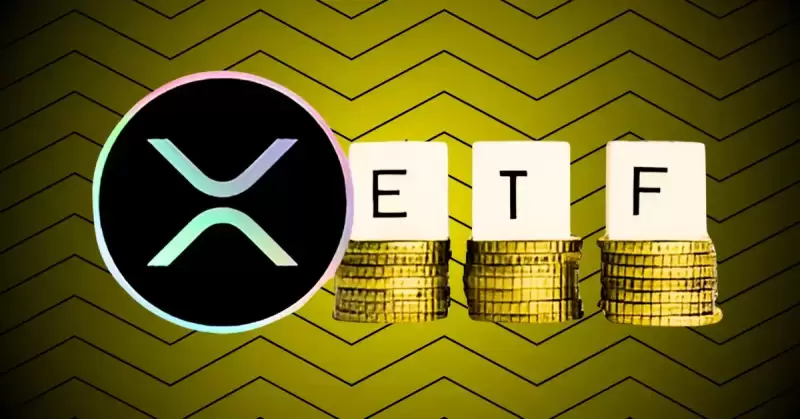 |
|
 |
|
 |
|
 |
|
 |
|
 |
|
 |
|
 |
|
 |
|
 |
|
 |
|
 |
|
 |
|
 |
|
 |
|
Ethereumは、ビットコイン後の時価総額による2番目に大きい暗号通貨であり、分散型アプリケーション(DAPP)およびスマートコントラクトのための主要なブロックチェーンプラットフォームです。
Ethereum is the second-largest cryptocurrency by market capitalization, after Bitcoin, and is the leading blockchain platform for decentralized applications (dApps) and smart contracts. Launched in 2015 by Vitalik Buterin and a group of co-founders, Ethereum revolutionized the blockchain space by introducing a platform that goes beyond simply being a cryptocurrency. It is a decentralized, open-source platform that enables developers to build, deploy, and interact with decentralized applications using blockchain technology.
Ethereumは、ビットコイン後の時価総額による2番目に大きい暗号通貨であり、分散型アプリケーション(DAPP)およびスマートコントラクトのための主要なブロックチェーンプラットフォームです。 2015年にVitalik Buterinと共同設立者のグループによって開始されたEthereumは、単に暗号通貨であることを超えたプラットフォームを導入することで、ブロックチェーンスペースに革命をもたらしました。これは、開発者がブロックチェーンテクノロジーを使用して分散型アプリケーションを構築、展開、および対話できるようにする、分散型のオープンソースプラットフォームです。
Ethereum has become the backbone of the Decentralized Finance (DeFi) ecosystem, non-fungible tokens (NFTs), and countless other innovative use cases. By enabling smart contracts, Ethereum has empowered a new wave of applications that aim to disrupt traditional industries like finance, gaming, real estate, and supply chain management.
Ethereumは、分散型財務(DEFI)エコシステム、不均一なトークン(NFT)、およびその他の無数の革新的なユースケースのバックボーンになりました。スマートコントラクトを有効にすることにより、Ethereumは、金融、ゲーム、不動産、サプライチェーン管理などの従来の業界を混乱させることを目的とした新しいアプリケーションの波を強化しました。
At its core, Ethereum is a blockchain network that allows for the creation of decentralized applications and smart contracts. Unlike Bitcoin, which is primarily used as a store of value and a digital currency, Ethereum’s platform is designed to be much more versatile. Ethereum enables developers to write smart contracts, which are self-executing contracts with the terms of the agreement directly written into lines of code.
その中心にあるEthereumは、分散型アプリケーションとスマートコントラクトを作成できるブロックチェーンネットワークです。主に価値のストアとデジタル通貨として使用されるビットコインとは異なり、イーサリアムのプラットフォームは、はるかに多用途になるように設計されています。 Ethereumにより、開発者はスマートコントラクトを作成できます。これは、コードのラインに直接書かれた契約の条件との自己実行契約です。
Smart contracts automatically execute actions when predefined conditions are met. This eliminates the need for intermediaries and reduces the risk of fraud or manipulation. For example, in a smart contract for a loan agreement, the contract would automatically release the funds once both parties meet the agreed-upon terms. Ethereum’s ability to facilitate these types of decentralized agreements has made it a cornerstone of the growing DeFi sector.
スマートコントラクトは、事前定義された条件が満たされたときにアクションを自動的に実行します。これにより、仲介者の必要性がなくなり、詐欺や操作のリスクが軽減されます。たとえば、ローン契約のスマート契約では、両当事者が合意された条件を満たすと、契約は自動的に資金をリリースします。これらのタイプの分散型協定を促進するイーサリアムの能力により、それは成長する債務セクターの基礎となりました。
Ether (ETH) is the native cryptocurrency of the Ethereum network. While Bitcoin is often referred to as a digital gold equivalent, Ether plays a slightly different role. Ether is used primarily as “gas” within the Ethereum network. When developers or users interact with Ethereum’s blockchain, they must pay transaction fees in Ether, which compensates the miners for validating transactions and securing the network.
Ether(ETH)は、Ethereumネットワークのネイティブ暗号通貨です。ビットコインはしばしばデジタルゴールドに相当するものと呼ばれますが、エーテルはわずかに異なる役割を果たします。エーテルは、主にイーサリアムネットワーク内の「ガス」として使用されます。開発者またはユーザーがEthereumのブロックチェーンと対話する場合、Etherの取引手数料を支払う必要があります。これにより、鉱山労働者はトランザクションの検証とネットワークの保護を補償します。
Ether also acts as a store of value and is often used as collateral in decentralized finance applications, as well as a medium of exchange for various goods and services. The price of Ether, like Bitcoin, is highly volatile, but it has gained widespread adoption as a critical component of the decentralized ecosystem.
エーテルはまた、価値のストアとして機能し、分散型ファイナンスアプリケーションの担保として、およびさまざまな商品やサービスとの交換媒体としてよく使用されます。ビットコインのようにエーテルの価格は非常に不安定ですが、分散型生態系の重要な要素として広範囲にわたる採用を獲得しています。
One of Ethereum’s most important innovations is the introduction of smart contracts. Smart contracts allow individuals and businesses to create self-executing agreements that are stored on the blockchain. These contracts automatically enforce the terms without relying on intermediaries, such as banks or legal institutions.
Ethereumの最も重要な革新の1つは、スマート契約の導入です。スマート契約により、個人や企業はブロックチェーンに保存されている自己執行契約を作成することができます。これらの契約は、銀行や法律機関などの仲介者に依存せずに条件を自動的に実施します。
Smart contracts have opened the door for decentralized applications, or dApps, which are applications that run on the Ethereum blockchain rather than on centralized servers. dApps can range from financial services (like lending and borrowing platforms) to games, marketplaces, and social networks. They are transparent, censorship-resistant, and trustless, meaning users do not need to trust a central authority to use these services.
スマートコントラクトは、分散型アプリケーション、または集中サーバーではなくEthereumブロックチェーンで実行されるアプリケーションであるDAPPの扉を開きました。 Dappsは、金融サービス(貸付や借入プラットフォームなど)から、ゲーム、マーケットプレイス、ソーシャルネットワークにまで及びます。それらは透明で、検閲に強く、信頼できないため、ユーザーはこれらのサービスを使用するために中央当局を信頼する必要はありません。
Ethereum’s flexibility allows for the creation of custom tokens, decentralized exchanges, and other financial products, making it the preferred platform for the DeFi movement. DeFi platforms aim to provide traditional financial services such as lending, borrowing, insurance, and trading but without intermediaries, often with lower fees and greater accessibility.
Ethereumの柔軟性により、カスタムトークン、分散化された交換、およびその他の金融商品の作成が可能になり、Defi運動に適したプラットフォームになります。 Defiプラットフォームは、融資、借入、保険、取引などの従来の金融サービスを提供することを目的としていますが、仲介者は、多くの場合、料金が低く、アクセシビリティが大きくなります。
Decentralized Finance (DeFi) refers to the movement that uses blockchain technology to offer financial services outside of traditional financial institutions. Ethereum is the dominant blockchain powering DeFi applications. Through Ethereum’s smart contract capabilities, users can access decentralized exchanges (DEXs), lending platforms, synthetic assets, and more.
分散型ファイナンス(DEFI)とは、ブロックチェーンテクノロジーを使用して従来の金融機関以外の金融サービスを提供する運動を指します。 Ethereumは、支配的なブロックチェーン電源のDefiアプリケーションです。 Ethereumのスマートコントラクト機能を通じて、ユーザーは分散型取引所(DEXS)、貸出プラットフォーム、合成資産などにアクセスできます。
DeFi platforms have seen massive growth in recent years, with billions of dollars locked in various protocols. One notable example is Uniswap, a decentralized exchange that allows users to trade tokens directly from their wallets without the need for a centralized intermediary. Similarly, platforms like Compound and Aave enable users to lend and borrow cryptocurrencies using Ethereum-powered smart contracts.
Defiプラットフォームは近年、さまざまなプロトコルに数十億ドルが閉じ込められており、大成長を遂げています。注目すべき例の1つはUniswapです。これは、中央集中仲介者を必要とせずに、ユーザーがウォレットからトークンを直接交換できる分散型交換です。同様に、化合物やAAVEなどのプラットフォームにより、ユーザーはイーサリアム駆動のスマートコントラクトを使用して暗号通貨を貸し出して借りることができます。
Ethereum is also at the heart of the Non-Fungible Token (NFT) boom. NFTs are unique digital assets that represent ownership or proof of authenticity of a digital item, such as artwork, music, or even virtual real estate. Ethereum’s ERC-721 and ERC-1155 token standards provide a framework for the creation and trading of NFTs. As the most widely used blockchain for NFTs, Ethereum has become the go-to platform for artists, creators, and collectors, driving significant cultural and financial value in the NFT space.
Ethereumは、不可能なトークン(NFT)ブームの中心にもあります。 NFTは、アートワーク、音楽、さらには仮想不動産など、デジタルアイテムの所有権または真正性の証明を表すユニークなデジタル資産です。 EthereumのERC-721およびERC-1155トークン標準は、NFTの作成と取引のフレームワークを提供します。 NFTで最も広く使用されているブロックチェーンとして、Ethereumはアーティスト、クリエイター、コレクターにとって頼りになるプラットフォームになり、NFTスペースで重要な文化的および財政的価値を推進しています。
Ethereum’s ability to scale and remain efficient has been a topic of concern, especially as the network has faced congestion and high gas fees due to increased demand. To address these issues, Ethereum is undergoing a significant upgrade called Ethereum 2.0, which will transition the network from a Proof-of-Work (PoW) consensus mechanism to Proof-of-Stake (PoS).
特に、ネットワークが需要の増加により混雑と高いガス料金に直面しているため、イーサリアムの拡張と効率を維持する能力は懸念のトピックとなっています。これらの問題に対処するために、EthereumはEthereum 2.0と呼ばれる大幅なアップグレードを受けています。これにより、ネットワークをワークの証明(POW)コンセンサスメカニズムから証明のステーク(POS)に移行します。
Under PoW, miners compete to solve complex mathematical puzzles to validate transactions and secure the network, However, this process is energy-intensive and can lead to scalability challenges. Ethereum 2.0 aims to solve these issues by implementing PoS,
POWの下で、鉱夫は複雑な数学的パズルを解決してトランザクションを検証し、ネットワークを保護するために競争しますが、このプロセスはエネルギー集約的であり、スケーラビリティの課題につながる可能性があります。 Ethereum 2.0は、POを実装することにより、これらの問題を解決することを目指しています。
免責事項:info@kdj.com
提供される情報は取引に関するアドバイスではありません。 kdj.com は、この記事で提供される情報に基づいて行われた投資に対して一切の責任を負いません。暗号通貨は変動性が高いため、十分な調査を行った上で慎重に投資することを強くお勧めします。
このウェブサイトで使用されているコンテンツが著作権を侵害していると思われる場合は、直ちに当社 (info@kdj.com) までご連絡ください。速やかに削除させていただきます。
-

-

-

-

- クジラと機関はイースターの前にビットコインの保有を増やしています
- 2025-04-20 01:40:13
- ABCにより、2023年4月19日午前1時13分に更新されました。
-

-

-

-

-




























































